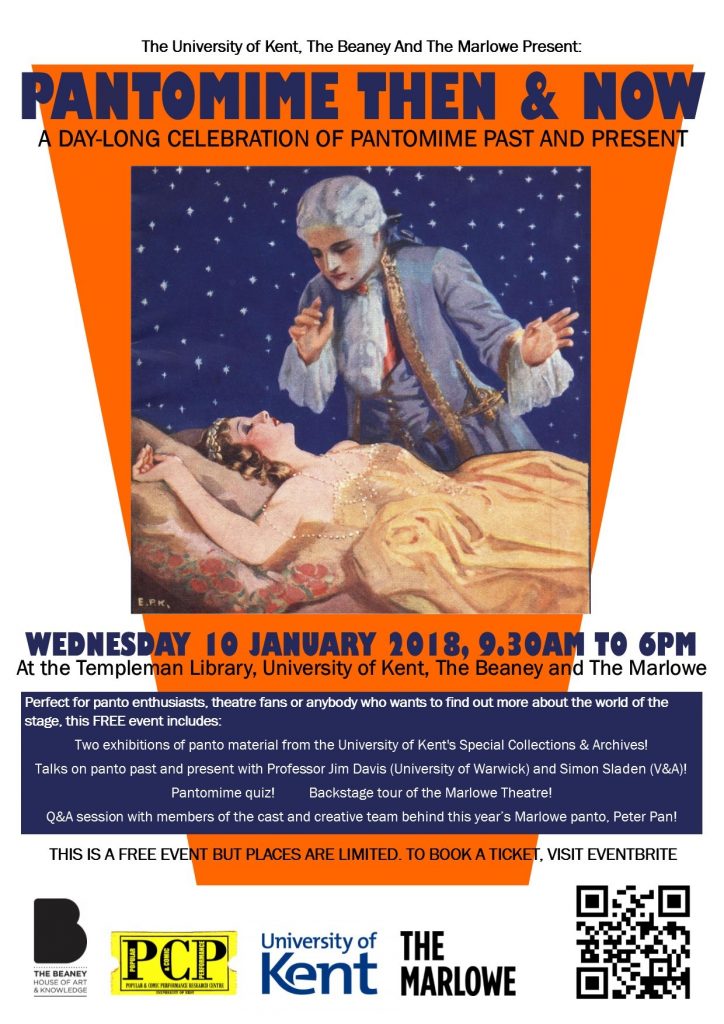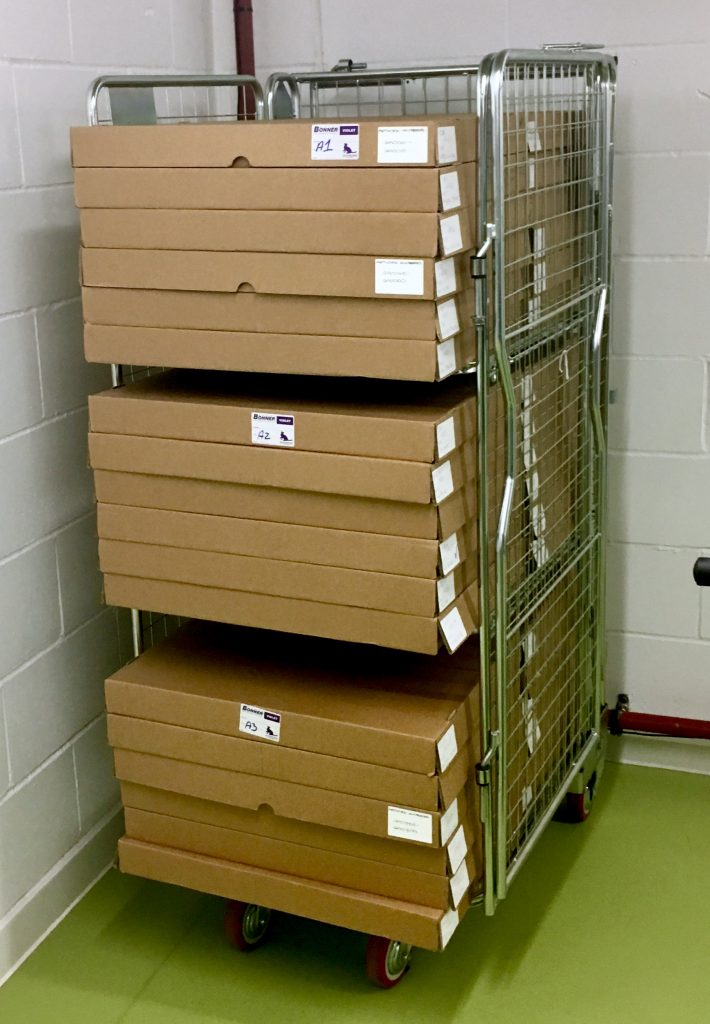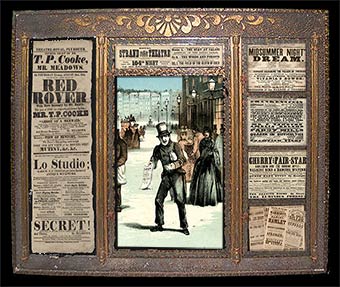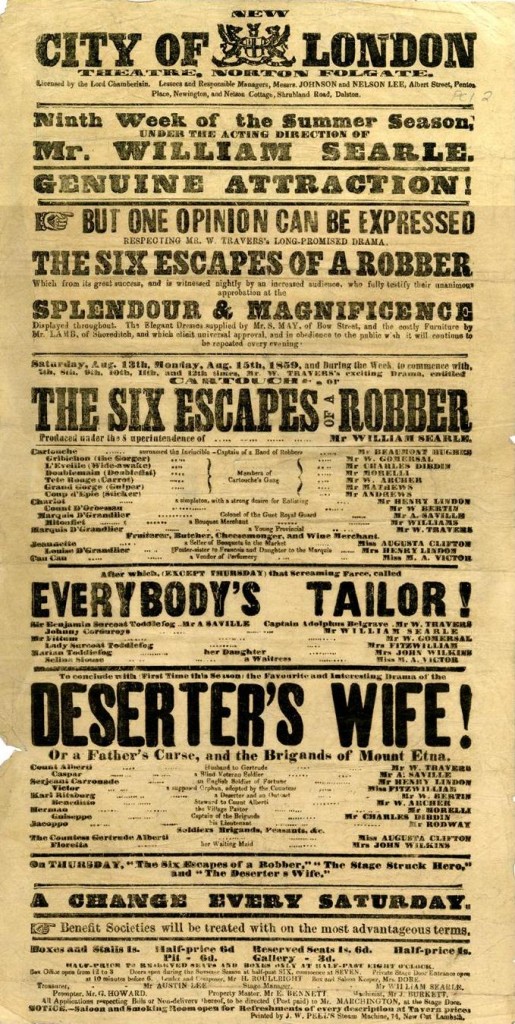Jon Shepherd, Assistant Archivist, writes about a new collection to the British Stand-Up Comedy Archive, the Martin Stiles Comedy Collection:
Alternative comedy: a style of comedy that rejects established stereotypes (especially racist or sexist) and often containing a political component.
In the 1970s traditional club comedians of the time often relied on jokes targeting women and minorities. A dislike of this led a group of performers at London’s Comedy Store to begin to pioneer an approach in opposition to the mainstream of British comedy. It eschewed a reliance on a standardised structure of a sequence of jokes and punchlines, tending instead to be somewhat more free-form. What resulted was more akin to comedy’s answer to punk.
Martin Stiles was and no doubt still is a keen fan of comedy. He spent many years as a devoted follower of live stand-up, and both radio and tv comedy shows. This led him to do two things. Firstly, he created a detailed comedy index of comedians, producers and writers. For each he listed the individual’s tv and radio comedy credits, often including the relevant year of transmission for each. Secondly, he assembled a wonderfully impressive collection of comedy scrapbooks. Stiles attended as a member of the audience the recording at the Paris Studio in Lower Regent Street, London of a vast array of comedy shows. This he did several times a month, sometimes several times a week! Each scrapbook includes newspaper cuttings, many from the Radio and TV Times, tickets for the shows and flyers sent out by the ticket unit to promote the recordings of the shows. Some of these items are autographed by the performers featured. The shows involved include many famous programmes such as Red Dwarf, The Mary Whitehouse Experience, Whose Line is it Anyway, I’m Sorry I Haven’t A Clue and Knowing Me Knowing You…With Alan Partridge. Many were pilots and by necessity includes some shows which didn’t make it beyond the pilot stage.
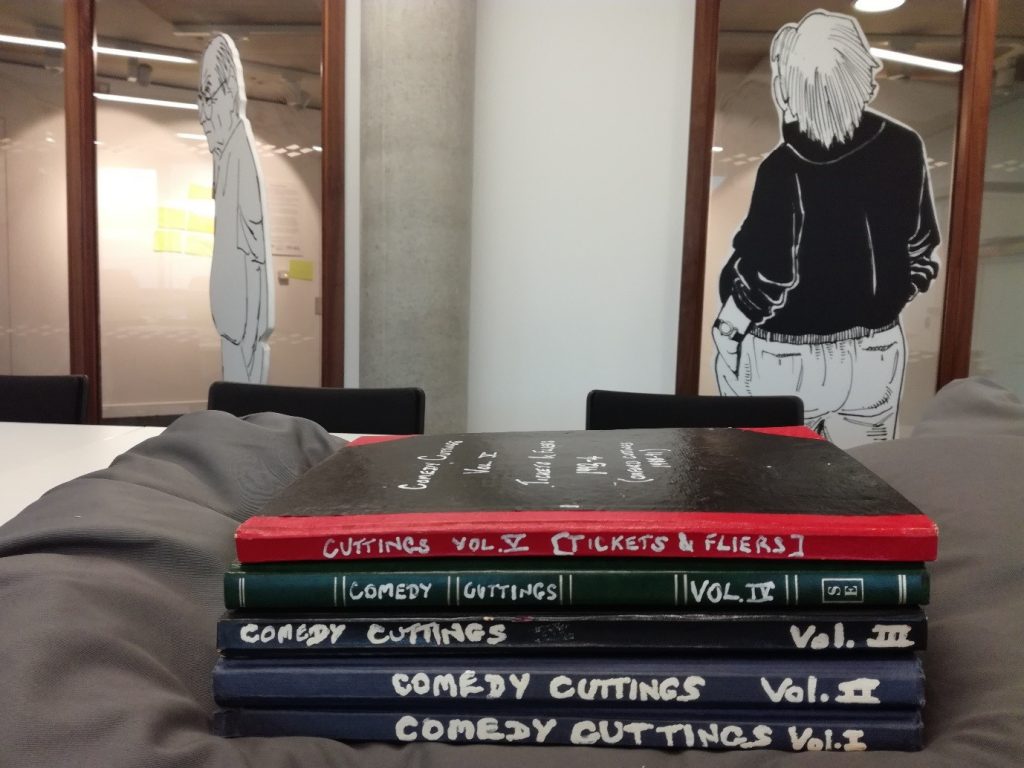
Martin Stiles comedy scrapbooks
This methodically assembled collection reads like a who’s who not just of British comedy from this delightful period of change but also more generally of British cinema, theatre and public life then and now. Casual fans and aficionados of the following performers may be interested in the collection; Stephen Fry, Rowan Atkinson, Robbie Coltrane, French and Saunders, Tony Robinson , Emma Thompson, Kenneth Branagh, Hugh Laurie, Lenny Henry, Ben Elton, Harry Enfield, Harry Hill, Paul Merton, Rory Bremner, Adrian Edmonson, Rik Mayle, Nigel Planer, Jonathan Ross, Tim Brooke-Taylor, Bill Oddie, John Cleese, Alexei Sayle, Jack Dee, Victoria Wood, Julie Walters, Mel Smith, Griff Rhys Jones, Ruby Wax, Tracey Ullman, Mark Steel, Jasper Carrott, Floella Benjamin, Humphrey Lyttleton, Clive Anderson, Robert Llewellyn, Craig Charles, Chris Barrie, Graeme Garden, Roy Hudd, June Whitfield, Leslie Phillips, Shane Richie, Jim Broadbent, Andrew Sachs, Vic Reeves and Bob Mortimer, Peter Capaldi, Eddie Izzard, Geoffrey Perkins, Rupert Graves, Patricia Routledge, Michael Palin, Terry Jones, Eric Idle, Frank Skinner, David Jason, Sandi Toksvig, Ronnie Barker, Douglas Adam, Bob Geldof, Kenneth Williams, Wendy Richard, Martin Clunes, Danny Baker, Ulrika Jonsson, Morecambe and Wise, Meera Sya, Frankie Howerd, Les Dawson, Noddy Holder and many, many more…
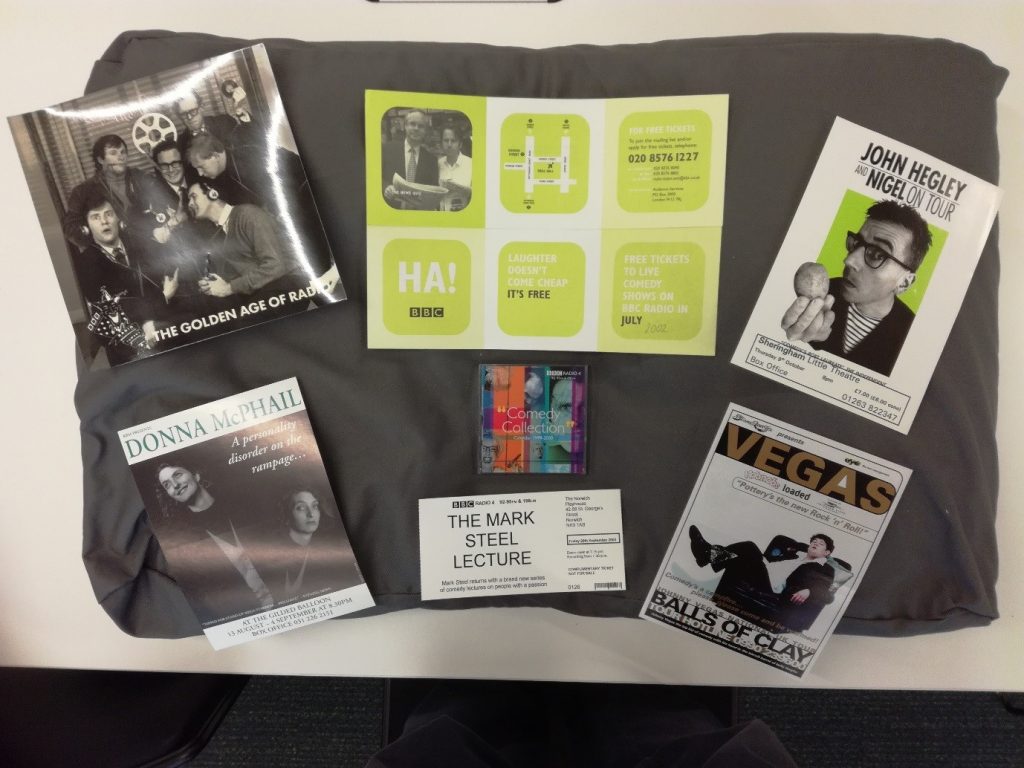
Items from the Martin Stiles Comedy Collection
If you fancy delving back into the fascinating world of comedy of the late 80s and early 90s then please contact us on specialcollections@kent.ac.uk or +44 (0)1227 82 3127.
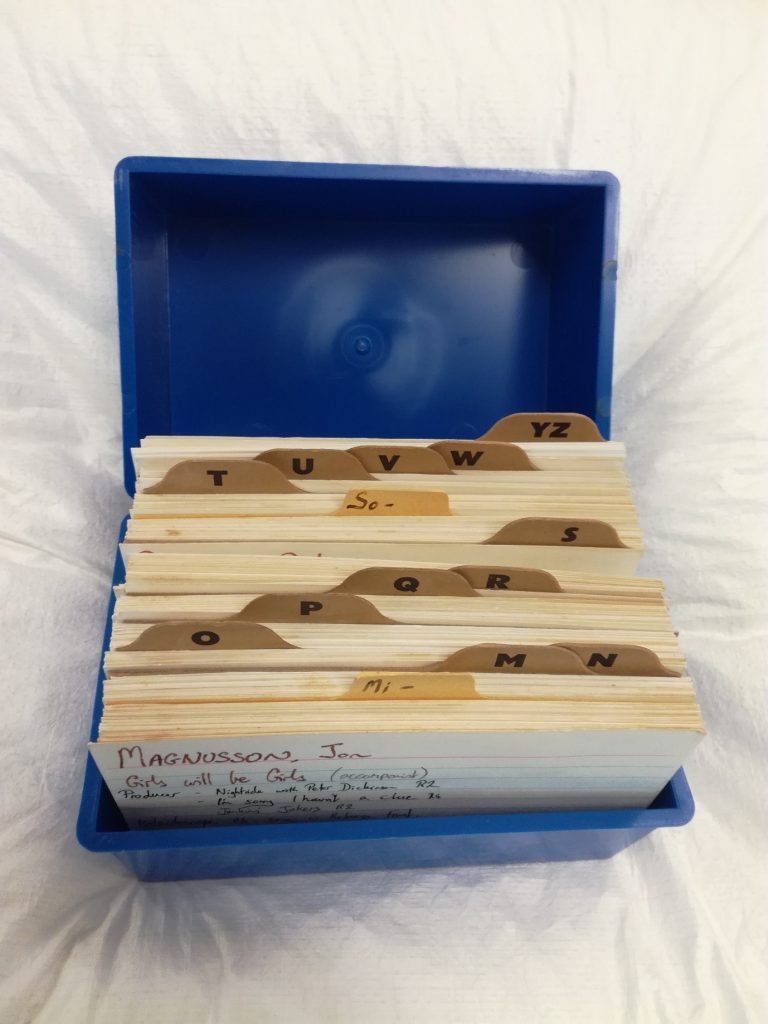
Martin Stiles Comedy Card index

